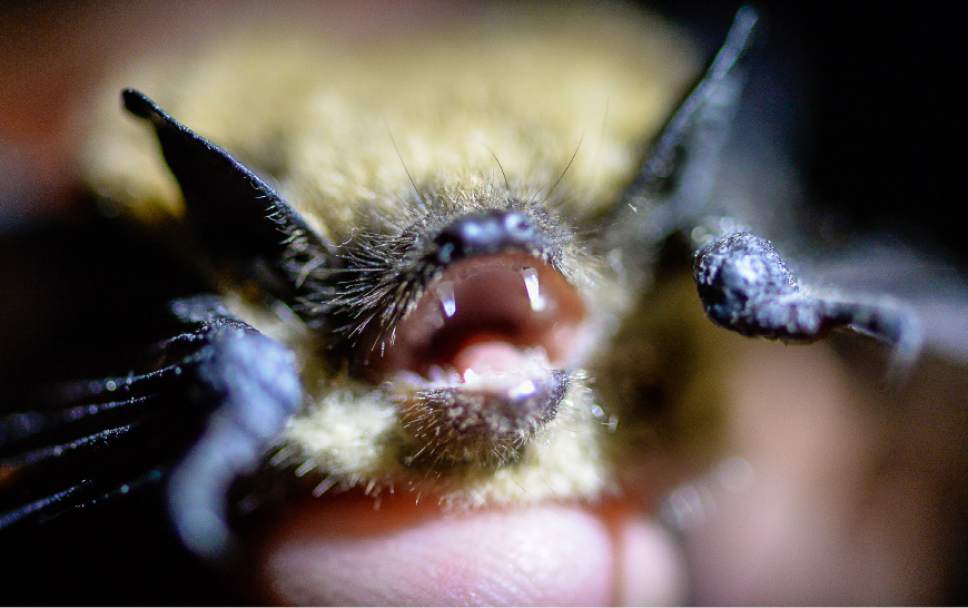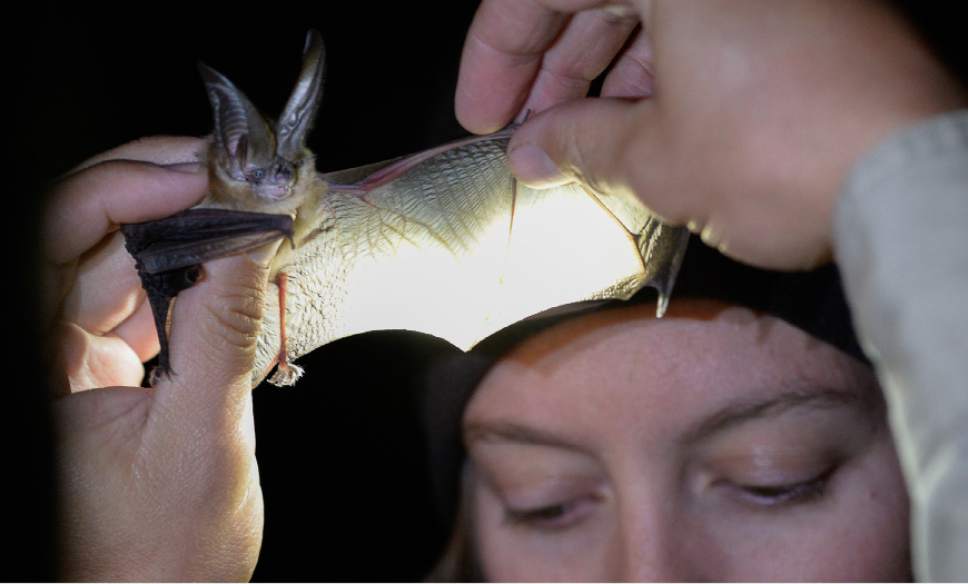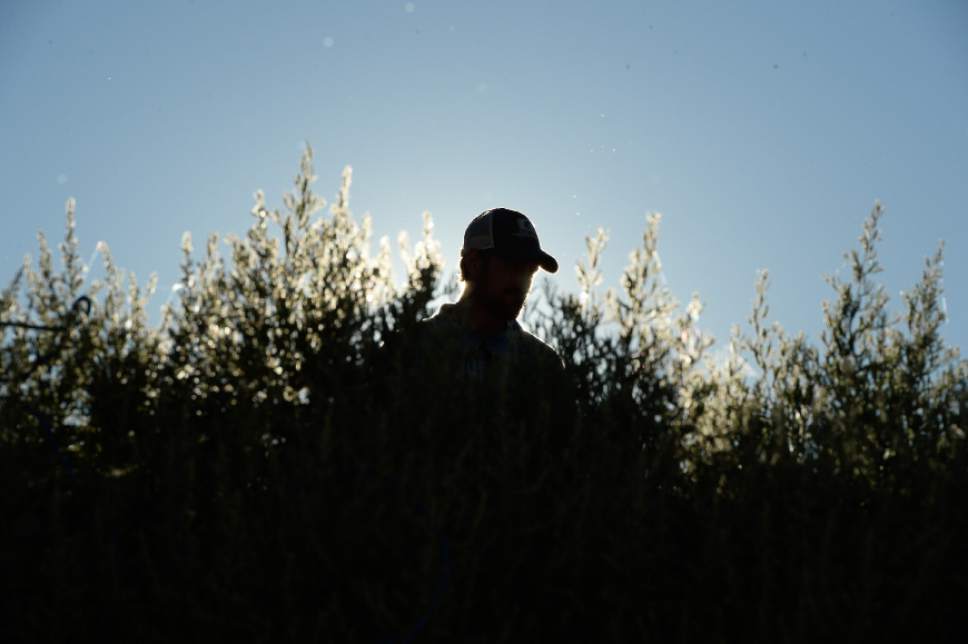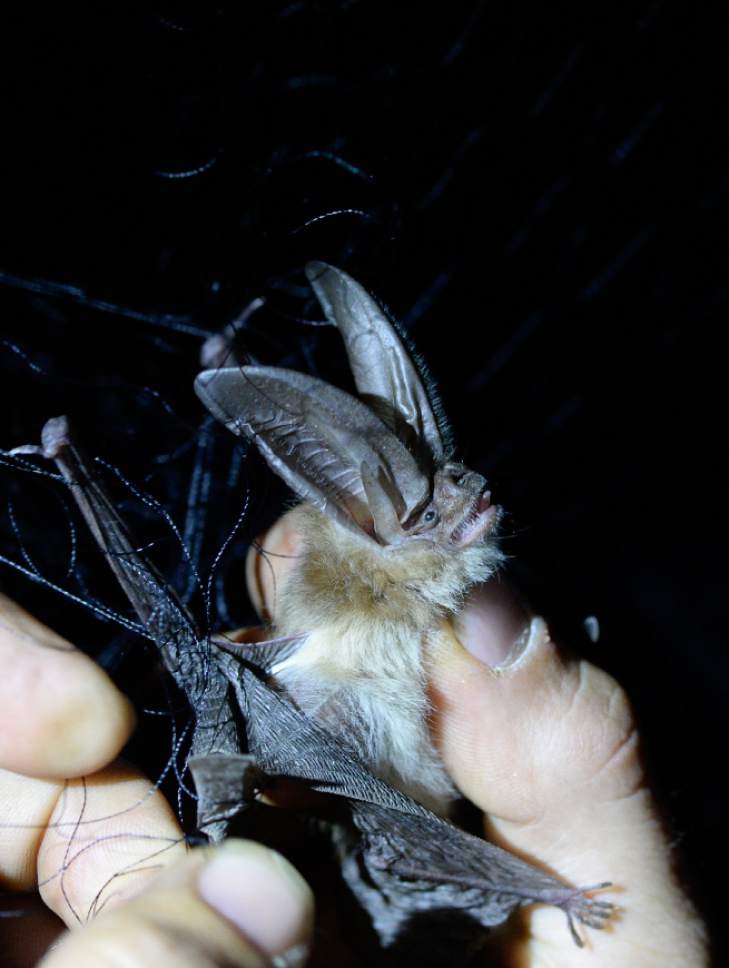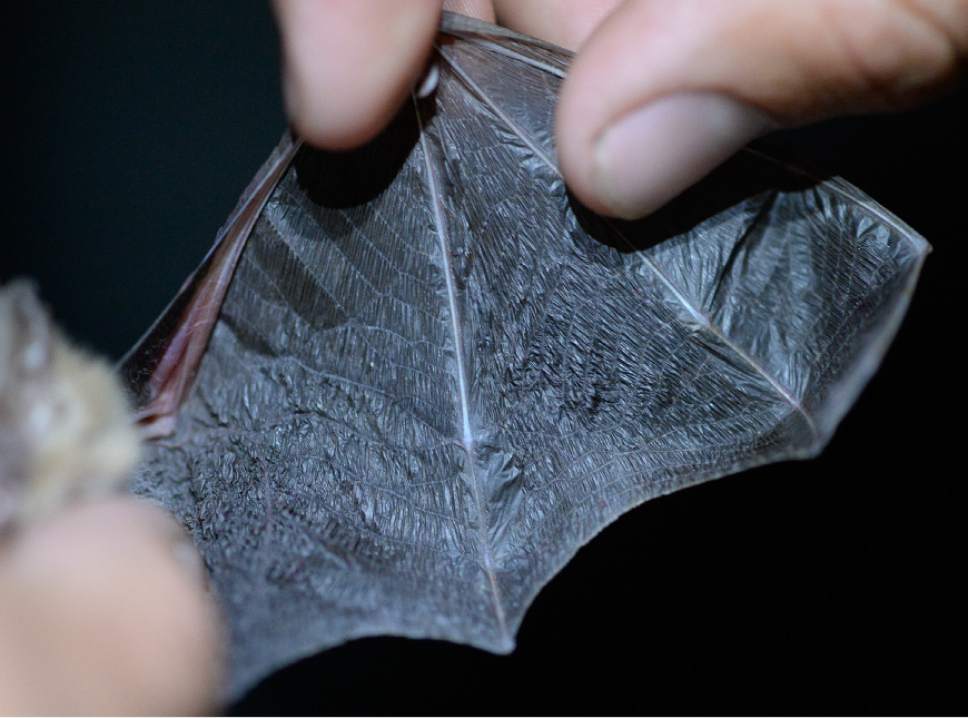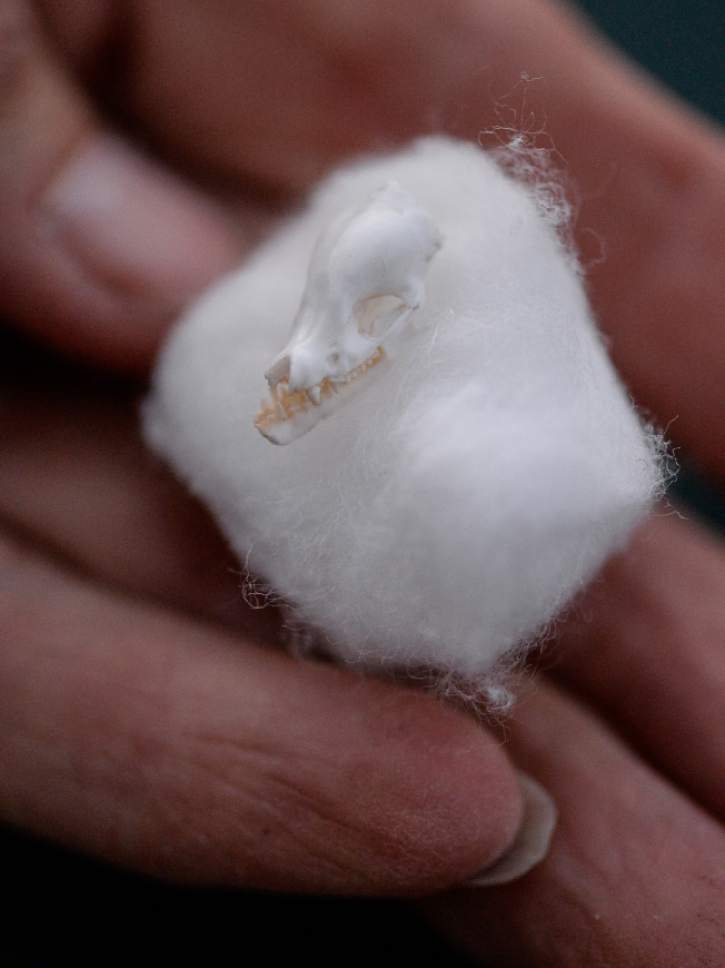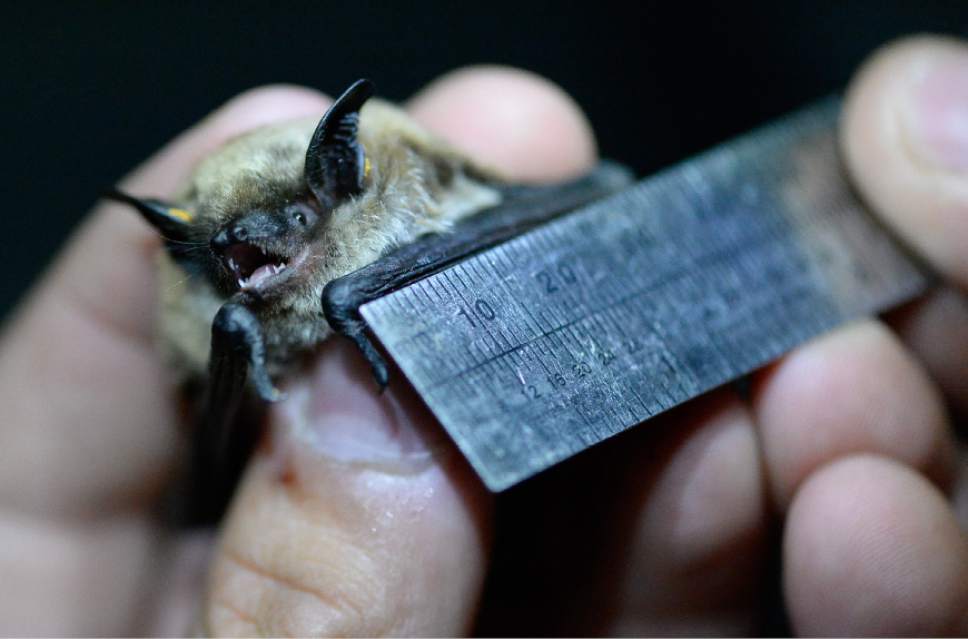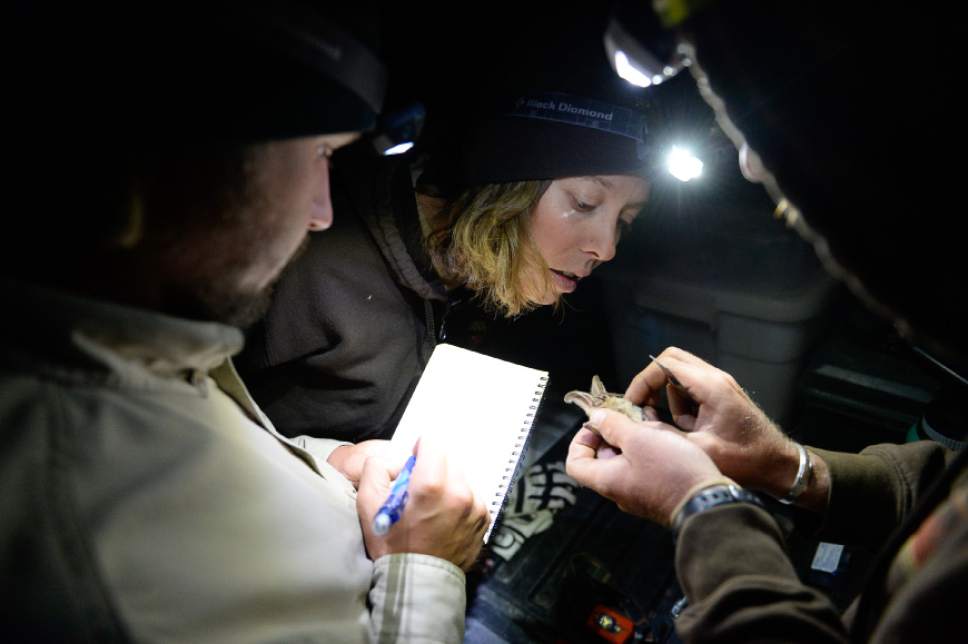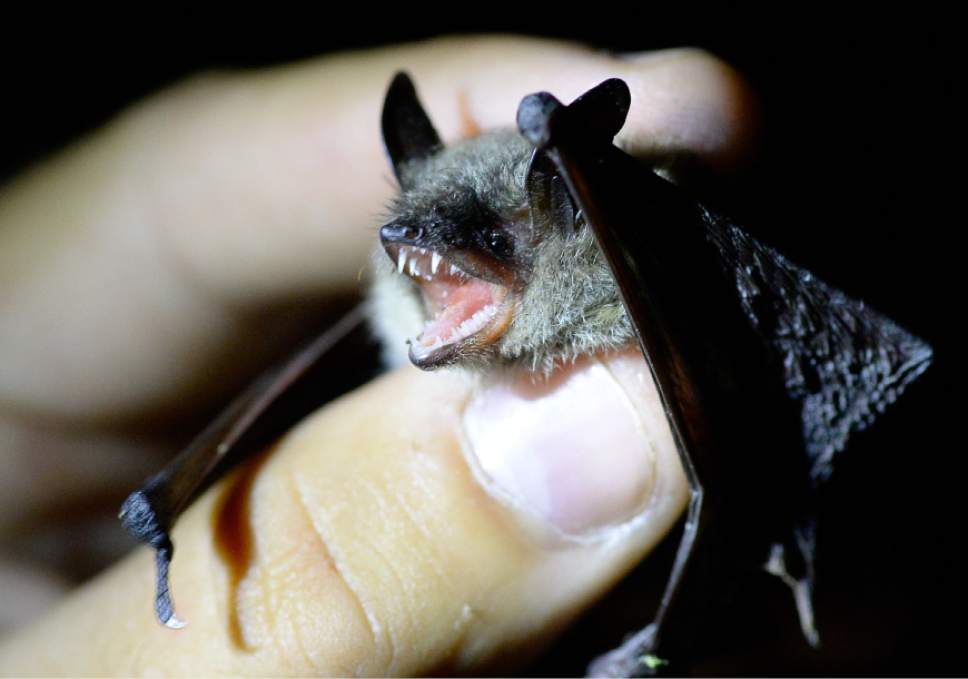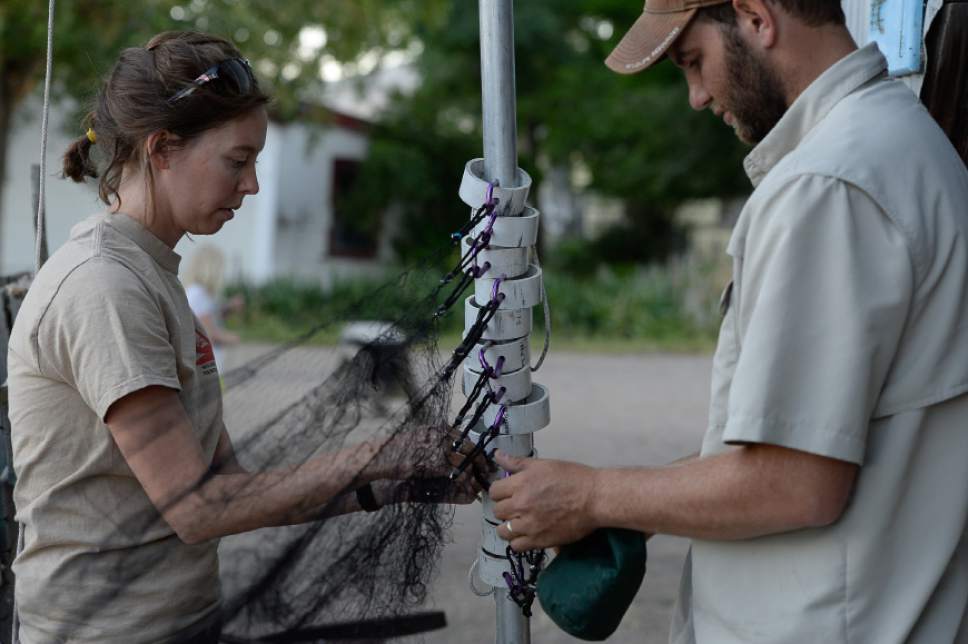Francisco Kjolseth | The Salt Lake Tribune
A little brown bat reveals its fangs as biologists take down measurements during a rece
Francisco Kjolseth | The Salt Lake Tribune
Antelope Island is swarming with insects. That makes it the perfect place to find bats,
Francisco Kjolseth | The Salt Lake Tribune
A Townsend bat is held up to the light of Jessie Bunkley as a way to determine age by s
Francisco Kjolseth | The Salt Lake Tribune
Skyler Farnsworth weighs a bat while Jessie Bunkley writes down the details during a re
Francisco Kjolseth | The Salt Lake Tribune
A mist net can be seen in the last light of the day as biologists set up on Antelope Is
Francisco Kjolseth | The Salt Lake Tribune
Antelope Island is swarming with insects. That makes it the perfect place to find bats,
Francisco Kjolseth | The Salt Lake Tribune
A little brown bat is inspected and measured by biologists during a recent study on Ant
Francisco Kjolseth | The Salt Lake Tribune
Antelope Island is swarming with insects. That makes it the perfect place to find bats,
Francisco Kjolseth | The Salt Lake Tribune
The wing of a little brown bat is outstretched to determine its age. The older the bat
Francisco Kjolseth | The Salt Lake Tribune
A hand gives good size perspective for a bat skull. Antelope Island is swarming with in
Francisco Kjolseth | The Salt Lake Tribune
A little brown bat is momentarily trapped and measured by DNR biologists during a recen
Francisco Kjolseth | The Salt Lake Tribune
Adam Brewerton, Jessie Bunkley and Cade Lazenby, from left, takes down measurements on
Francisco Kjolseth | The Salt Lake Tribune
Skyler Farnsworth delicately removes a Townsend's bat from a mist net as part of a DNR
Francisco Kjolseth | The Salt Lake Tribune
A little brown bat expresses its displeasure after being trapped by biologists during a
Francisco Kjolseth | The Salt Lake Tribune
Jessie Bunkley, left, and Skyler Farnsworth untangle mist nets used to trap bats as the
Francisco Kjolseth | The Salt Lake Tribune
A little brown bat reveals its fangs as biologists take down measurements during a recent field study on Antelope Island on Saturday night.
Francisco Kjolseth | The Salt Lake Tribune
Antelope Island is swarming with insects. That makes it the perfect place to find bats, which rely on insects as a primary food source. Biologists from the DWR and Antelope Island used mist nets to trap bats on Saturday night at the Fielding Garr Ranch for a survey.
Francisco Kjolseth | The Salt Lake Tribune
A Townsend bat is held up to the light of Jessie Bunkley as a way to determine age by seeing the amount of cartilage in the wing. On Saturday night DNR biologists gathered on Antelope Island to trap bats for a study.
Francisco Kjolseth | The Salt Lake Tribune
Skyler Farnsworth weighs a bat while Jessie Bunkley writes down the details during a recent study. Antelope Island is swarming with insects, making it the perfect place to find bats, which rely on insects as a primary food source. Biologists from the DWR and Antelope Island held the event on Saturday night to teach the public about bats. Using mist nets, they trap and identify bats that feed over the island.
Francisco Kjolseth | The Salt Lake Tribune
A mist net can be seen in the last light of the day as biologists set up on Antelope Island for a study of bats on Saturday night.
Francisco Kjolseth | The Salt Lake Tribune
Antelope Island is swarming with insects. That makes it the perfect place to find bats, which rely on insects as a primary food source. Biologists from the DWR and Antelope Island held the event on Saturday night to teach the public about bats. Using mist nets, they trap and identify bats that feed over the island.
Francisco Kjolseth | The Salt Lake Tribune
A little brown bat is inspected and measured by biologists during a recent study on Antelope Island.
Francisco Kjolseth | The Salt Lake Tribune
Antelope Island is swarming with insects. That makes it the perfect place to find bats, which rely on insects as a primary food source. Biologists from the DWR and Antelope Island held the event on Saturday night to teach the public about bats. Using mist nets, which is how they captured this Townsend's big-eared bat.
Francisco Kjolseth | The Salt Lake Tribune
The wing of a little brown bat is outstretched to determine its age. The older the bat get, the more cartilage is formed in the knuckle of the wing.
Francisco Kjolseth | The Salt Lake Tribune
A hand gives good size perspective for a bat skull. Antelope Island is swarming with insects. That makes it the perfect place to find bats, which rely on insects as a primary food source. Biologists from the DWR and Antelope Island held the event on Saturday night to teach the public about bats. Using mist nets, they trap and identify bats that feed over the island.
Francisco Kjolseth | The Salt Lake Tribune
A little brown bat is momentarily trapped and measured by DNR biologists during a recent study on Antelope Island.
Francisco Kjolseth | The Salt Lake Tribune
Adam Brewerton, Jessie Bunkley and Cade Lazenby, from left, takes down measurements on a Townsend's bat. Distinct because of its large ears, biologists from the DWR and Antelope Island measure the bats and determine their reproduction status and age in hopes of learning more.
Francisco Kjolseth | The Salt Lake Tribune
Skyler Farnsworth delicately removes a Townsend's bat from a mist net as part of a DNR study on Antelope Island on Saturday night.
Francisco Kjolseth | The Salt Lake Tribune
A little brown bat expresses its displeasure after being trapped by biologists during a recent study on Antelope Island.
Francisco Kjolseth | The Salt Lake Tribune
Jessie Bunkley, left, and Skyler Farnsworth untangle mist nets used to trap bats as they set up for a field survey on Antelope Island on Saturday night. Antelope Island is swarming with insects, making it the perfect place to find bats, which rely on insects as a primary food source. Biologists from the DWR and Antelope Island held the event on Saturday night to teach the public about bats.


